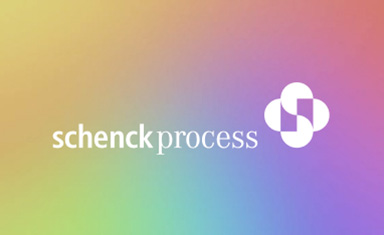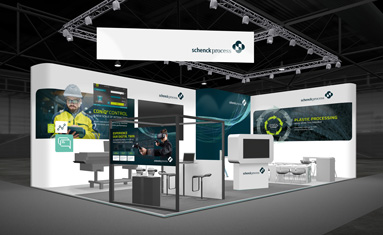Just as in Charles Darwin's evolutionary theory, where only the animals with the best characteristics survive, in digital Darwinism, only those companies that embrace their digital transformation “survive”. Digitalisation should not be understood as a temporary trend that only serves the competitiveness of the company. More importantly, digital transformation offers numerous advantages that analogue companies simply miss out on. In the following, we highlight how Schenck Process is implementing the digital transformation internally and which digitalisation steps we are taking with our customers.
Digitalisation ensures future-proof jobs
In light of the digital transformation, there is no need for our employees to worry about the appreciation of their work. On the contrary, we need every single member of our team to implement this large-scale project. Only together can we make the most of the advantages of digital tools and build up extensive know-how among our workforce.
Whether already well networked or without any digital touchpoints in their work so far - each and every one of our expert workers is important for the success of the transformation. Our goal is to significantly simplify internal processes through digitalisation. This becomes visible, for example, through a more transparent, digital document management.
Holger Hackstein
Chief Digital Officer
“Only with close cooperation between the teams will our digital transformation be successful. We need all our people on board: those with many years of experience on our machines as well as the new digital experts who have joined us.”
Empower the people
Rules solely as an 'end in themselves' are of no use. For this reason, we generally set them moderately and instead provide our people with guidelines and tips on how they can optimally participate in shaping our digital transformation. The complete digitalisation process, which includes new developments on a regular basis and therefore requires frequent trainings, will continue over the next few years. Digital tools are continually evolving, and with more experience we are certain that they can be used even more successfully.
In order to promote collaboration among our team members in the course of the digital transformation, we have eliminated some elements of the hierarchy that have grown out of date. Anyone who was previously a supervisor is now a mentor or coach, which ensures communication at eye level. Within the different expert units, we have done away with rank distinctions, but we do assign special roles for certain responsibilities. The separation between departmental and disciplinary hierarchy promotes the content-related focus of cooperation and prevents disciplinary measures from disrupting the relationship or the work in a team of experts. Overall, we rely on the personal responsibility of our people and encourage them to seek the advice of colleagues when necessary.
How do we implement the digital transformation?
Phase 1: Our first step was to create the necessary (digital) infrastructure to enable the transformation. This included implementing the communication platform Microsoft Teams, a digital HR-management tool and introducing a hybrid working arrangement.
Phase 2: The digital transformation at Schenck Process is based on four pillars. With the implementation of structural changes, process transformation, the adaptation of the corporate and work culture and new digital products, we are implementing the digital transformation in all areas of the company.
The new structures provide the necessary agility for the transformation. Also, we always search for best practices in our departments and apply this knowledge onto other divisions of the company. We try to standardise and automate our processes as much as possible. For the entire transformation, we build on a corporate culture in which our own people serve as role models for their colleagues. On the product front, we are constantly developing new digital solutions, resulting in new fields of activity and extensive digital support for our customers.
- better and more agile workflow
- digital communication (Microsoft Teams)
- digital HR-management
- hybrid working arrangement
- standardisation and automation of processes
- identifying critical time and cost parameters
- replacing established manufacturing processes with digital solutions
- serving as a role model for colleagues and clients
- Code of Conduct for work and communication processes
- transforming into a digital player
- digital integration: Connecting as many existing machines to the cloud as possible
- digital products/services
Phase 3: In the final phase of the digital transformation, the implementation of the changes is to be achieved in all business areas.
“The digitalisation helps us to work together more easily. Companies, who miss this opportunity, risk being left behind by the competition.”
 Holger Hackstein, Chief Digital Officer
Holger Hackstein, Chief Digital Officer
Digital Solutions from Schenck Process
One of the most frequent questions from our customers is whether Schenck Process' digital services require new machines. However, we always develop our digital applications in a way that existing machines can remain in use. Consequently, when we develop a digital concept, we always ensure its compatibility with the customer's machines. In other words, the applications may change, but the existing machines will not be rendered useless as a result.
Measurable improvement in our workflow
For several of our digital services, we have already developed systems that measure their success, i.e. the savings achieved through the digitalisation steps. The Benefit Calculator accompanying our product LOGiQ indicates the extent to which you can maximise your throughput and also quantifies material and financial savings. Currently, our experts are developing a calculator that can forecast the wear and tear of machines in order to avoid unplanned downtime.
All data from the calculators must be regarded as approximate values. Exact metrics can first be obtained when the machine is in operation.
Interne vs. externe digitale Transformation:
Our Digital Transformation – Internally
To be able to work together more successfully, we decided to digitise all areas of the company. For this purpose, we first laid the foundations, in particular a digital infrastructure and a corporate culture, that is suitable for the project.

Our Digital Transformation – Externally
To support our clients in their digital transformation, we are constantly educating ourselves and developing new digital solutions. We look forward to shaping the digital evolution together and to mutually benefiting from each other's expertise.





